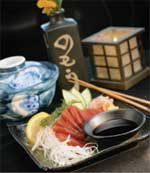Titanium and thousand-year-old soy sauce
It is often observed that Japan is the country where old and new come together. This applies in the highest degree to the manufacture of Japanese soy sauce – a thousand-year-old food manufacturing process encountering ultramodern materials and production technology. The meeting place: a high-capacity plate heat exchanger (PHE) from Alfa Laval.
DATE 2023-11-28Soy sauce enjoys a prominent position in Asian cookery. The manufacturing process involves fermentation lasting between six and twelve months, depending on the end product desired.
This method, more than a thousand years old, originated in China. Over the centuries, the Japanese have developed their own recipes and flavours.
Morita is one of the foremost producers of soy sauce in Japan. The company was founded way back in 1665 as a distiller of the Japanese rice wine sake. The production of soy sauce was begun around one hundred years ago. Now, at the plant in Tokoname, just outside Nagoya, 150 of Morita’s 300 employees achieve an annual output of some 5,000 tons. Morita’s sole target for its soy sauce is the Japanese market. Half of its production reaches consumers via retail shops, while the other half is sold to restaurants and the food industry.
Titanium plates solved the problem
“After fermentation, the soy sauce must be pasteurized to enhance its shelf life,” says Shoji Takano, who is in charge of production at Morita. “Pasteurization is done at different temperatures – 85 or 120°Celsius depending on the product. A plate heat exchanger is perfect for this purpose because it allows precise regulation, which enhances the quality of the final product.”
Soy sauce is not the easiest product in the world to deal with. The production process involves the addition of so much salt (nearly 20%) that a different pasteurizer, for example one made of stainless steel, would rapidly rust away. Morita has solved this problem with an Alfa Laval PHE, the M10, with titanium plates.
These provide unsurpassable thermal conduction while solving the corrosion problem simultaneously. A unique single-step pressing technique and the special pattern featuring many studs between the plates reduce the amount of the expensive metal required. And that, along with the long lifetime, results in good overall economy.
Morita’s pasteurizer has a capacity of 10,000 liters per hour. A recovery section where the outgoing soy sauce heats the incoming has helped make the process very energy efficient. The apparatus also features the easily exchanged Clip-on gaskets that are quickly inserted without glue. Shoji Takano is pleased.
“We compared many appliances before we decided on this one. Alfa Laval’s plate heat exchanger is extremely reliable and requires little maintenance. And another great advantage is that it takes up so little space as compared with other techniques.

